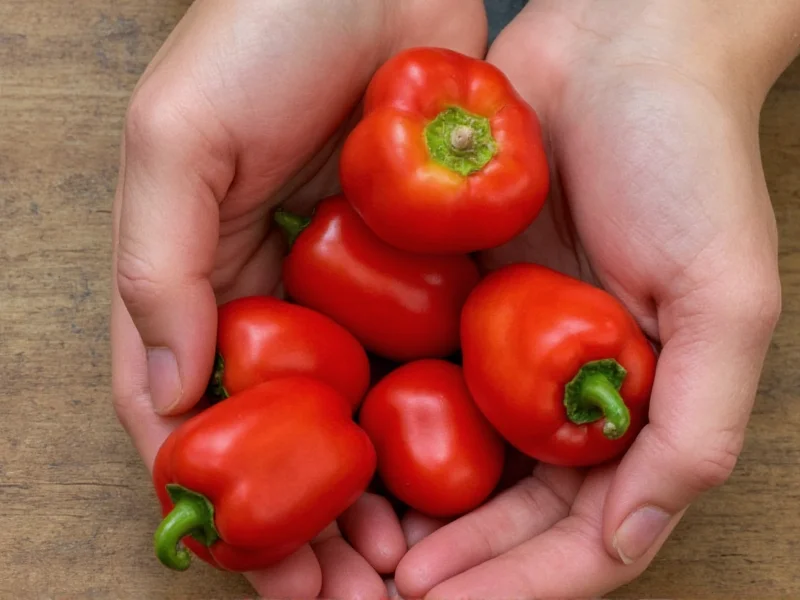The scotch bonnet pepper's intense heat and distinctive flavor make it a staple in Caribbean cuisine, particularly in Jamaican jerk seasoning and hot sauces. Understanding its precise heat measurement on the scoville scale helps cooks safely incorporate this fiery ingredient into their recipes while appreciating its unique culinary properties.
Understanding the Scoville Scale and Pepper Heat Measurement
The Scoville scale, developed by pharmacist Wilbur Scoville in 1912, measures the pungency or 'heat' of chili peppers and other spicy foods. Originally determined through human taste testing, modern measurements use high-performance liquid chromatography (HPLC) to quantify capsaicinoids—the chemical compounds responsible for a pepper's heat.
When discussing scotch bonnet scoville ratings, it's important to recognize that heat levels can vary significantly based on growing conditions, soil composition, climate, and even the specific part of the pepper being tested. The placenta (the white ribs inside the pepper) contains the highest concentration of capsaicin, making it substantially hotter than the flesh.
Scotch Bonnet Characteristics Beyond Heat
While the scotch bonnet scoville heat rating often dominates conversations about this pepper, its flavor profile deserves equal attention. These peppers typically feature:
- A distinctive wrinkled, bonnet-shaped appearance (hence the name)
- Vibrant colors ranging from yellow and orange to deep red when fully mature
- A complex fruity flavor with notes of apricot, apple, and citrus
- A floral aroma that distinguishes it from similar habanero peppers
This flavor complexity explains why scotch bonnets are prized in Caribbean cooking despite their formidable heat level. Chefs often remove the seeds and membranes to reduce the scoville heat units while preserving the distinctive flavor.
Comparing Scotch Bonnet Heat to Other Popular Peppers
Understanding where scotch bonnet peppers fall on the scoville scale requires context. The following comparison shows how they relate to other common chili varieties:
| Pepper Variety | Scoville Heat Units (SHU) | Heat Relative to Scotch Bonnet |
|---|---|---|
| Scotch Bonnet | 100,000–350,000 | Baseline |
| Habanero | 100,000–350,000 | Very similar, though scotch bonnets often slightly hotter |
| Jalapeño | 2,500–8,000 | 12–140 times milder |
| Serrano | 10,000–23,000 | 4–35 times milder |
| Ghost Pepper (Bhut Jolokia) | 855,000–1,041,427 | 2.4–10 times hotter |
| Carolina Reaper | 1,400,000–2,200,000 | 4–22 times hotter |
Practical Applications of Scotch Bonnet Peppers
Knowing the scotch bonnet scoville measurement isn't just academic—it directly impacts how these peppers should be used in cooking. Their heat level requires careful handling and measured incorporation into dishes:
Culinary Uses
In Caribbean cuisine, scotch bonnets appear in:
- Jamaican jerk seasoning (where the heat balances with allspice and thyme)
- Hot sauces and condiments (often blended with fruit like mango or pineapple)
- Pepper pot soup (a traditional Caribbean dish)
- Marinades for meats and seafood
Safety Considerations for Handling Extremely Hot Peppers
When working with peppers at this scoville heat level, proper safety precautions are essential:
- Always wear gloves when handling scotch bonnets to prevent skin irritation
- Avoid touching your face, especially eyes, while handling these peppers
- Use separate cutting boards and utensils for hot peppers
- Wash hands thoroughly with soap and water after handling (alcohol-based sanitizers can spread capsaicin)
- Consider using kitchen scissors instead of knives to minimize airborne capsaicin
Substituting Scotch Bonnet Peppers
If you can't find authentic scotch bonnets or need a less intense alternative, consider these options based on scoville heat unit comparisons:
- Habanero peppers: Nearly identical heat range (100,000–350,000 SHU) with slightly different flavor profile
- Mejillon peppers: Closest flavor match with similar scoville scale rating
- Seranno peppers: For significantly less heat (10,000–23,000 SHU) while maintaining some fruitiness
- Thai bird chilies: Different flavor but comparable heat (50,000–100,000 SHU)
When substituting, remember that scotch bonnets contribute both heat and distinctive flavor. Using just heat measurement as a guide may not yield identical results in your dish.
Factors That Influence Scotch Bonnet Heat Levels
The scoville heat units of scotch bonnet peppers aren't fixed—they can vary dramatically based on several factors:
- Water stress: Peppers grown with less water typically develop higher capsaicin concentrations
- Soil composition: Mineral-rich soils can enhance heat production
- Climate conditions: Warmer temperatures generally increase heat levels
- Ripeness: Fully mature red peppers are often hotter than green or yellow varieties
- Genetic variation: Different scotch bonnet strains have varying heat potentials
This variability explains why two scotch bonnets from the same plant might register different scoville scale measurements when tested.
Measuring Heat: From Scoville Organoleptic Test to Modern Methods
The original Scoville Organoleptic Test involved diluting pepper extract in sugar water until the heat was no longer detectable by a panel of tasters. Today, high-performance liquid chromatography (HPLC) provides precise measurements of capsaicinoid content, which are then converted to Scoville Heat Units using a mathematical formula.
When researching scotch bonnet scoville ratings, be aware that many online sources still reference the older, less precise testing methods. Modern agricultural studies provide more accurate scoville heat unit ranges based on laboratory analysis.











 浙公网安备
33010002000092号
浙公网安备
33010002000092号 浙B2-20120091-4
浙B2-20120091-4